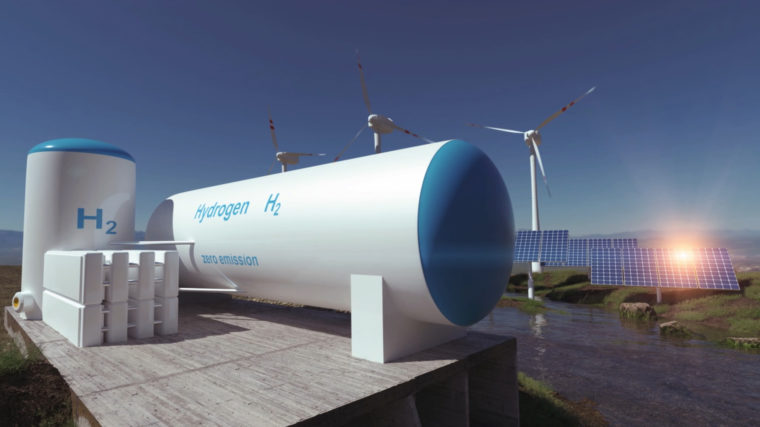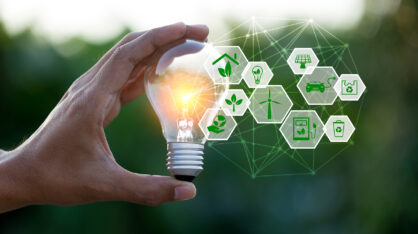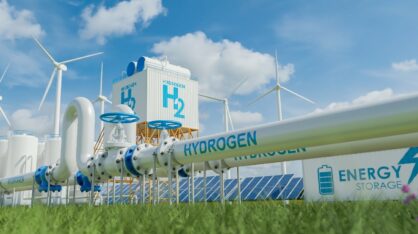In 2020, the European Commission launched the hydrogen strategy which has the ambitious goal to make the EU a pioneer in the use of green hydrogen. The green hydrogen from renewable electricity is supporting the achievement of a carbon-neutral EU and the production of green hydrogen shall be increased until 2024 up to one million tons. Currently, almost all hydrogen (10 million tons) within the EU countries is produced from fossil fuels and this shall be replaced by green hydrogen from renewables until 2030. (EU 2020)
This project investigates conditions for green hydrogen in the Ostrobothnia area through a study of technical information, market status, and future forecasts. This project creates a knowledge base for technology and supports new business opportunities for green hydrogen. The project supports the development of a common vision through seminar workshops and R&D activities around hydrogen production, distribution, storage, and use in the region. The project emphasis is on research questions such as what is the current status and development of the H2 economy and what are the most attractive new business opportunities related to green H2 in the region. (European Union/Pirkanmaan liitto 2021)
We are now experiencing the fourth wave of hydrogen economy (EIA 2019) and there is a lively debate for and against the viability of green hydrogen as one key solution toward a CO2 -free energy system and society. The main method to produce green hydrogen is electrolysis which needs purified water and significant amounts of electricity. This hydrogen can be produced with wind and solar power and thus it will gain the green label and be called green hydrogen. There are however several question marks around the electrolysis process such as the losses of production, storage, and transmission. One focal question when producing green hydrogen is the price of the used electricity. If taxes and transmission fees must be paid for the used electricity, this more than doubles the electricity price. SGN (2020) calculated the green hydrogen production price to be 3,9 €/kg if all levies and taxes must be paid. This price level corresponds well with many international studies (e.g figure 1, please note that EEG – levy exists only in Germany). One key question to be studied within this project is that how cost-competitive green hydrogen is now and what are the future price estimates look like. The method how to produce green hydrogen is vital to economical feasibility and there are three main methods to produce green hydrogen:
A: using curtailed renewables
This is maybe the most often referred option when green hydrogen production is discussed. The main problem with this approach is that the hours available with e.g. excess wind production (the need to curtail the production) on the market are very limited. So far there have been only three hours in the Finnish price area of Nordpool spot market of negative electricity prices (see Fingrid 2021) and thus a need to curtail the wind energy production. The Committee on Climate Change (2018) points out that it is not realistic to assume that curtailed generation would provide the amount of hydrogen necessary to meet the demand from multiple sectors. An approach suggested by Hinicio & LBST (2016) is one where an electrolyzer operator could enter the electricity market when the spot price for electricity is below an agreed threshold. Regarding the alternative to use curtailed renewable production the key question is the number of full-load hours which heavily influences production costs and competitiveness of green hydrogen (Figure 1).

B: Using grid electricity
This approach/solution has many advantages compared to using curtailed renewables because the electricity supply can be constant and does not need to fluctuate with the intermittent wind and solar energy production. This alternative is based on the option to use the certificates of Guarantees of Origin (GoO) to ensure that energy is produced by renewable sources. The con and risk with this alternative are that the electrolyzer operator is most likely liable for paying all the levies, taxes, and grid fees, which have a major impact on the product price (see figure 1).
C: Dedicated renewable generation
When a wind turbine or wind farm is dedicated to hydrogen production levies, taxes, and grid fees can most likely be avoided because the hydrogen is produced on the electricity production site. This alternative has also the strength that on most sites a rather high figure of annual full-load hours is available (e.g. most modern wind turbines have over 3,000 full-load hours/MW/annum). Regarding the alternative dedicated renewable generation, there can be some technical challenges e.g. how fast the electrolysis process can react to the production changes of the intermittent resources. The majority of the current electrolysis capacity is based on alkaline electrolyzes (AEL) technology which can have a ramp-up time of 30-60 minutes. Proton-conducting polymeric membrane electrolysis (PEM) can correspond faster to the changes in electricity production and supply, but it is often a more expensive alternative than alkaline electrolyzes.
These three different paths to produce green hydrogen illustrate what kind of issues we will study within this project. The presented alternatives A-C were described here on a common level based more on international sources. Within this EU financed project “H2 Ecosystem Roadmap”, we will study these alternatives in the Finnish and regional context. There are also numerous other interesting topics within the green hydrogen ecosystems that our project group will study during the time 1.8.2021 – 31.8.2022. We researchers within this project are eager to dive deeper into the world of hydrogen when mapping the opportunities green hydrogen can offer our region.




